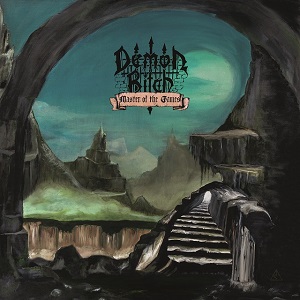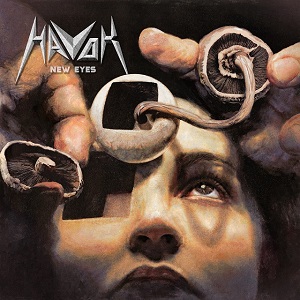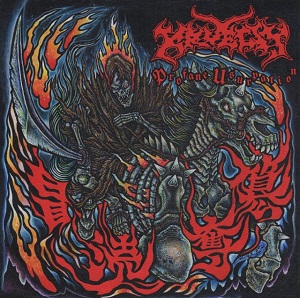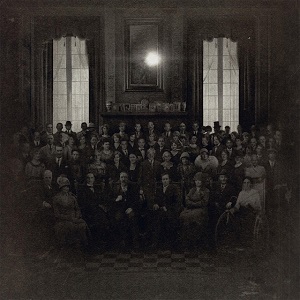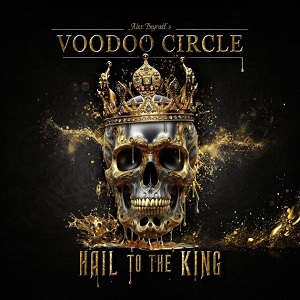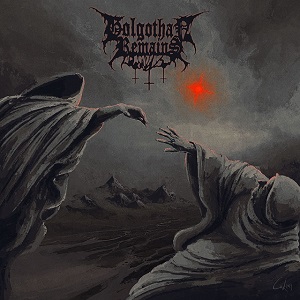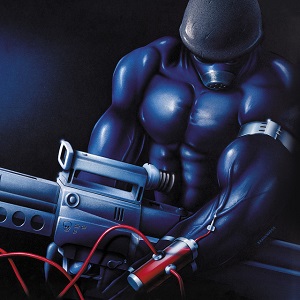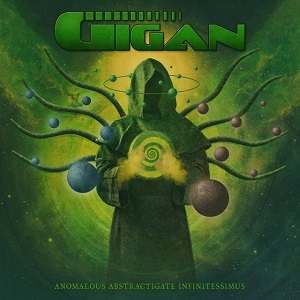Art Director Dennis Woloch Details The Creative Process For The KISS Solo Album Artwork
August 12, 2013, 11 years ago
KissFAQ has launched Back In The Solo Album Groove: The KISS Albums. 35 Years Later..., an ambitious multi-week retrospective dedicated to arguably the biggest milestone in KISStory: the 1978 KISS solo albums. Today, the site has published an interview with art director Dennis Woloch, who secured the services of Eraldo Carugati to create the artwork for the 1978 KISS solo albums.
The following are excerpts from Woloch's interview with KissFAQ's Tim McPhate:
On the decision to do portraits for the KISS solo albums:
KF: It was certainly an unprecedented campaign. As you alluded to, no one had ever done something like this before. Do you remember thinking that the ante for the artwork needed to be upped accordingly?
DW: "There's no question about it. I thought that this was the most important KISS-related project to date. My immediate goal that I set for myself was to try to make them as classic and timeless as possible. I didn't want these things to look dated. I actually never want anything I do to wind up looking dated. I try to avoid anything trendy because if you do something trendy, it looks great now and it looks terrible tomorrow. It's just always like that. You go back and look at something that was done years ago and it was obviously designed for the times, but it doesn't hold up. But I think most of the KISS stuff does hold up still."
KF: I agree, Dennis.
DW: "Yeah, you know, I really had that in the back of my mind. 'Let's not be too trendy with type styles that come and go [and] colors that come and go, [and] silly ideas that come and go'. So for these solo albums, I said, 'OK. Timeless and classic'. And I sort of right away knew that they would have to be portraits of each guy. I just couldn't imagine any other image on there even though I tried. Because portraits was one of the first ideas that came into my head, I said, 'Well, it's got to be their face'. I mean now it seems so obvious, in retrospect, to say, 'Well, yeah. What else would you have done?' Well you could have done a lot of things. I mean, they could have all looked different - one from the other. You could have tried to maybe capture each guy's individual personality on it. Or talk to each guy and say, 'What do you like? What are your favorite colors?' But that would have been wrong because it really is KISS. KISS is an entity, as a whole. So I kept it that way. Then I said, 'OK, portraits. That's a given. But let me keep thinking'. I kept thinking and I said, 'Maybe it should be their whole body standing there? Their whole figure. Hmmm ... no'. (laughs) Because then you have costumes and that comes and goes and that becomes dated where you could point at it and say, 'Oh, 1978'. So I didn't do that. And so I went back to portraits. I think this was a key decision - when I decided not to do a photograph."
KF: I've always wondered if photos of the band members were ever a consideration.
DW: "Yeah, I don't know why, because of the "classic" feeling that I was trying to put across, I thought it would be better served by illustration. You know, a photo is just not the same as art."

On working with Eraldo Carugati:
KF: So when you came across his work, Eraldo Carugati was a new name to you?
DW: "Absolutely. I had never heard of him."
KF: You would have gotten in touch with Eraldo?
DW: "Yeah. He didn't have an agent, I don't think. So I didn't have to go through an agency."
KF: And was he receptive about doing the project from the outset?
DW: "Totally. He was a good guy. He was in his late 50s when he did that. He had an Italian accent. He was from Italy."
KF: Apparently, he spoke multiple languages, including Italian, English, French, and German.
DW: "I didn't know that. He was a really good guy. He told me that he referred soccer games on the weekend. I couldn't get over that, because he was about 57 at the time. He was in great shape, good health, and he ran around refereeing soccer games. But he was in Chicago. So we had to fly out to Chicago and talk to him out there. He worked at a big company - the name of which also escapes me. I don't know what his relationship was there. [Editor's Note: Carugati worked for Stephens, Biondi and DeCicco, a Chicago-based commercial art and photography studio.] I think he may have rented space in the company and also did work for them when need be. It was an old-fashioned set up, the kind of thing they used to have in the '40s or '50s where you have a graphic design company and under the same roof there would be a little photography studio, there would be guys who could do very realistic renderings of products - you know cars and a can of beans, whatever they were selling. Then down the hall would be the retoucher and the airbrush guy. Then around the corner would be the guy that did pastel mockups and renderings. They had to use pastels before they used magic markers - it was unbelievable work. I used to see this when I was first coming into the business. That's the kind of place it was. And It was huge; it had a couple of floors. And he sat there, he had this space in there where he did the KISS work. And like I said, I don't know if Eraldo got all the money or if he had to split that with them because he was working with them or for them, or if he just rented space from them. I really never got that straight."

On assigning colors to the portraits:
KF: Of course, the colors are very striking and help given each painting a unique feel. Were different colors part of the original instructions?
DW: "Yeah. Early on, I think this is even before I did the Alive! album, which was the first one I did. Bill Aucoin said, 'Dennis, we're going to put out these little trinkets for the fans. It's going to be each guy's signature done in metal. And it will be a pin and fans could wear it'. It was just made out of crappy, silver-colored metal. It came out in a little cardboard card, and the cards hang on a hook in the store, that sort of thing. And maybe blister-packed, I don't know. And he said, 'Can you design those for us? Like a Gene Simmons signature pin [with] KISS logo?' I said, 'Sure'. And he said, 'It's one color because it's a cheap job'. I said, 'OK. Just a simple one-color [job] with some simple typography on there'. And so I'm starting to lay it out, put the KISS logo on it and the signature. And I said, 'Well, it's one color but there's four separate ones. Do they all have to be the same color? Or could each one be a different color?' So I go back and said, 'Look, I don't think it's going to make any difference, cost-wise, because maybe they'll be run at different times. Let's make each guy one color'. He said, 'Yeah, that's OK'. I went back and had to think, 'What guy gets what color?' That was the very first time where I assigned colors to each guy. So I said, 'OK, Gene's going to be red because he splits blood and he has fire. So he's red'. He was easy. And I said, 'Ace? Blue'. Space, the sky -- I don't know, Ace and blue made sense. And then I said, 'OK, green for the jungle cat'. And I did not know what to do for Paul (laughs). I scratched my head for a while on that one. I said, 'Actually, we don't know what Paul is (laughs). We know who everybody else is, but we don't know what he is. He's got a star on his face, what the fuck is that? (laughs) 'Oh, he's the lover. Oh, I see'. I said, 'What the hell is that?' I said, 'Purple. Purple is passion'."
KF: Right.
DW: "So there we go. We got that. They became the little colors on these cardboard cards that held their signature pins. And that was it. I didn't have to think about that for years until we did the solo albums and I'm standing with Eraldo, and I said, 'You know, they have black backgrounds that they're on, and their hair is black. So they're going to be back-lit. So the hair picks up a fringe of color like a halo'. He was going to originally just do them all with a yellow-ish light, as though it was really back-lit, like in a photograph. And I said, 'No, no, no. Gene is going to have a red glow', and it came back to me, the colors that I had assigned to them. So I told him, and that's how that happened on the solo albums. And it's all these little things that pop into your head at the right time that really make it work. because I could have forgotten that, it was four years ago. We never talked about each guy having his own color since that time I did those little pins. But I'm standing there and I'm talking to him and we're talking about back-lighting, and I said, 'Oh, wait a minute..'"
KF: It's just the perfect icing on the cake. I can't even imagine the album covers without the colors.
DW: "There's no question, yeah."
On a special late addition to Gene Simmons' portrait:
DW: Of course, the story I always tell about Eraldo is Gene didn't always have the dribble of blood when he first brought it in. Now, I'll be perfectly honest, I don't remember who or how that suggestion came out, that Gene needed a little something extra. Maybe it was Bill Aucoin, who was standing there looking at them. I don't think it was me, but it was a long time ago (laughs). [Someone] said, 'Well, Gene needs a little something extra. He spits blood onstage'. And so Eraldo actually had, in his pocket, a little piece of cardboard. It was a palette where he had dried up globs of paint on it. You know, they were dry. They come alive when you add water. And he had a tiny skinny brush in his pocket. And Eraldo always wore a jacket and a tie. He was a real gentleman. Even when he worked, I think he just rolled up his sleeves, and he had a tie on. Old-school, very European in a way. And he takes out the brush and he said, 'Can I have a little water?' We gave him a little thing full of water and he dips it in. He had some red on the palette, he brought that back to life with the water. And he just starts painting right on the painting. I mean, he doesn't do like a little pencil outline."
KF: He went right at it?
DW: "Oh my God. I'm walking away, looking out the window. I'm saying, 'Oh, fuck me. He's going to screw it up now'. And I kept walking back and taking a peek at it. And like a magician, out of nowhere, boom, this beautiful little drop of blood with the shadow and the highlight on it. I said, 'Oh, man. This is too good'.
On his reaction to the finished products:
KF: The first time you laid eyes on them, was it a "wow" moment?
DW: "Yes, because he had enough of it rendered realistically that I knew that we really had something great here. Although it wasn't done yet. So I was, let's say, very optimistic. When he delivered them, that was the end of the story. I was over the moon. I said, 'This stuff is fantastic'. I walked into Howard Marks' office and I showed it to him. Everybody was just floored. Even if you look at those things - you can probably see them on the reproductions, if you get a good reproduction - their eyes look wet. They're just rendered so beautifully."
Read the full interview at this location.


